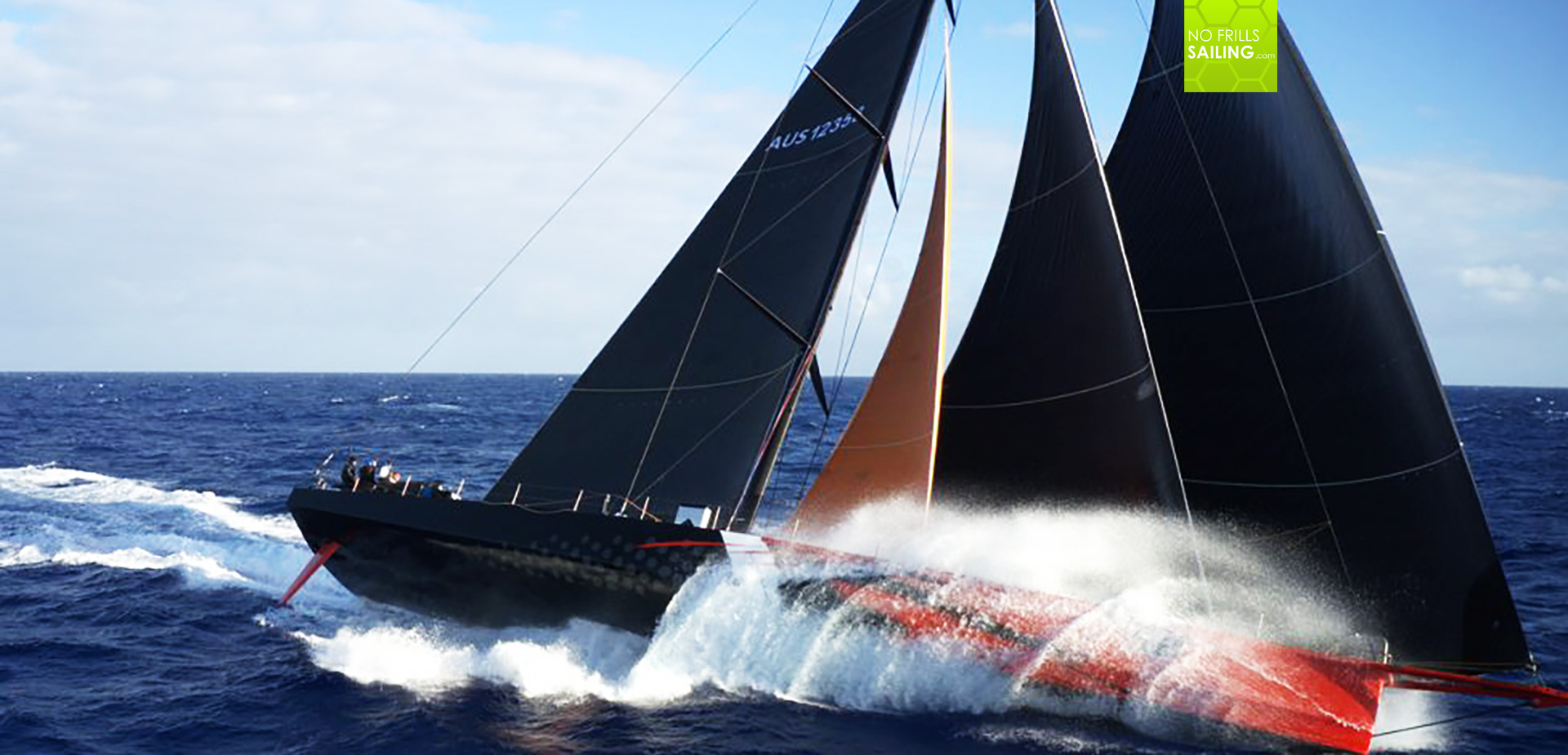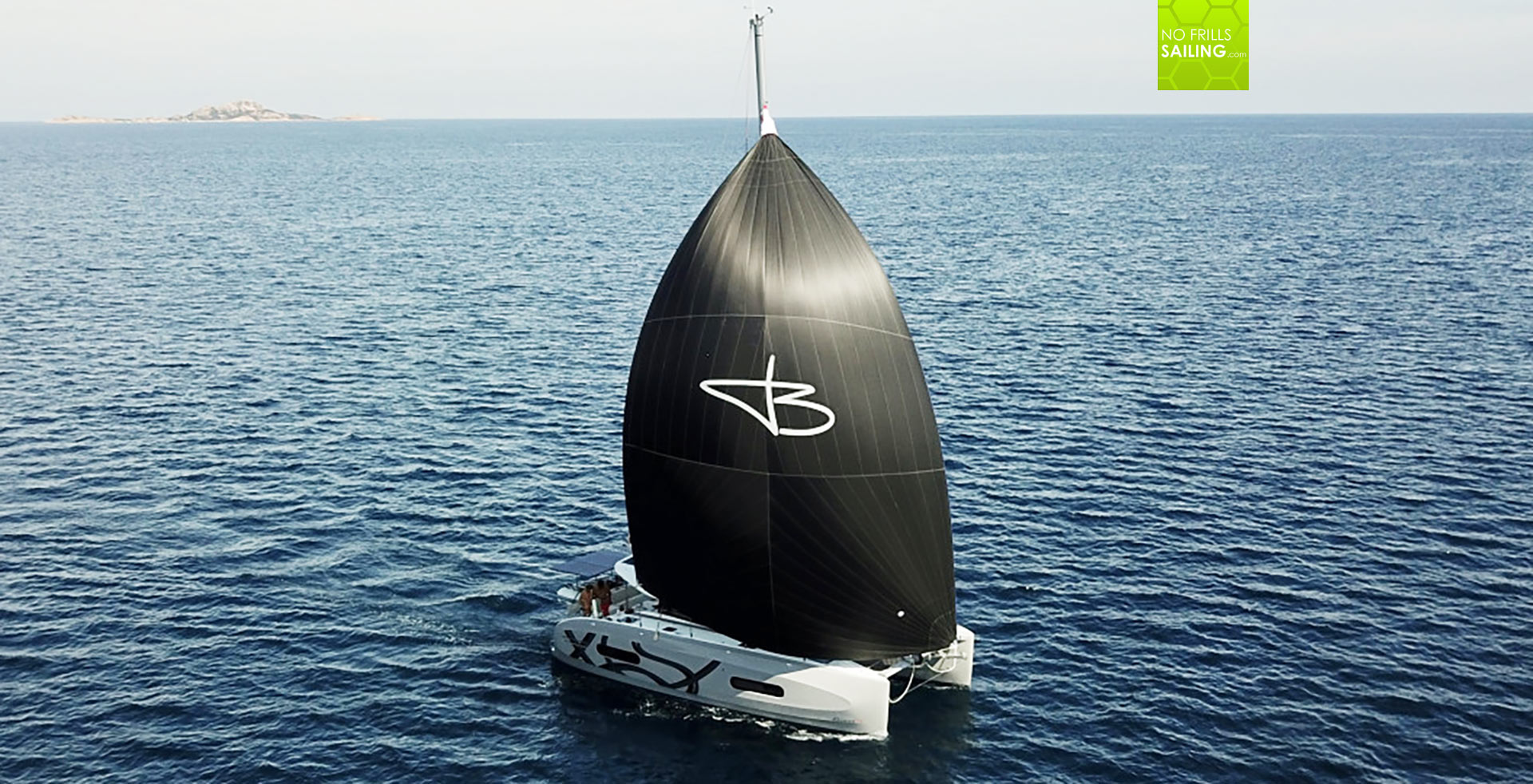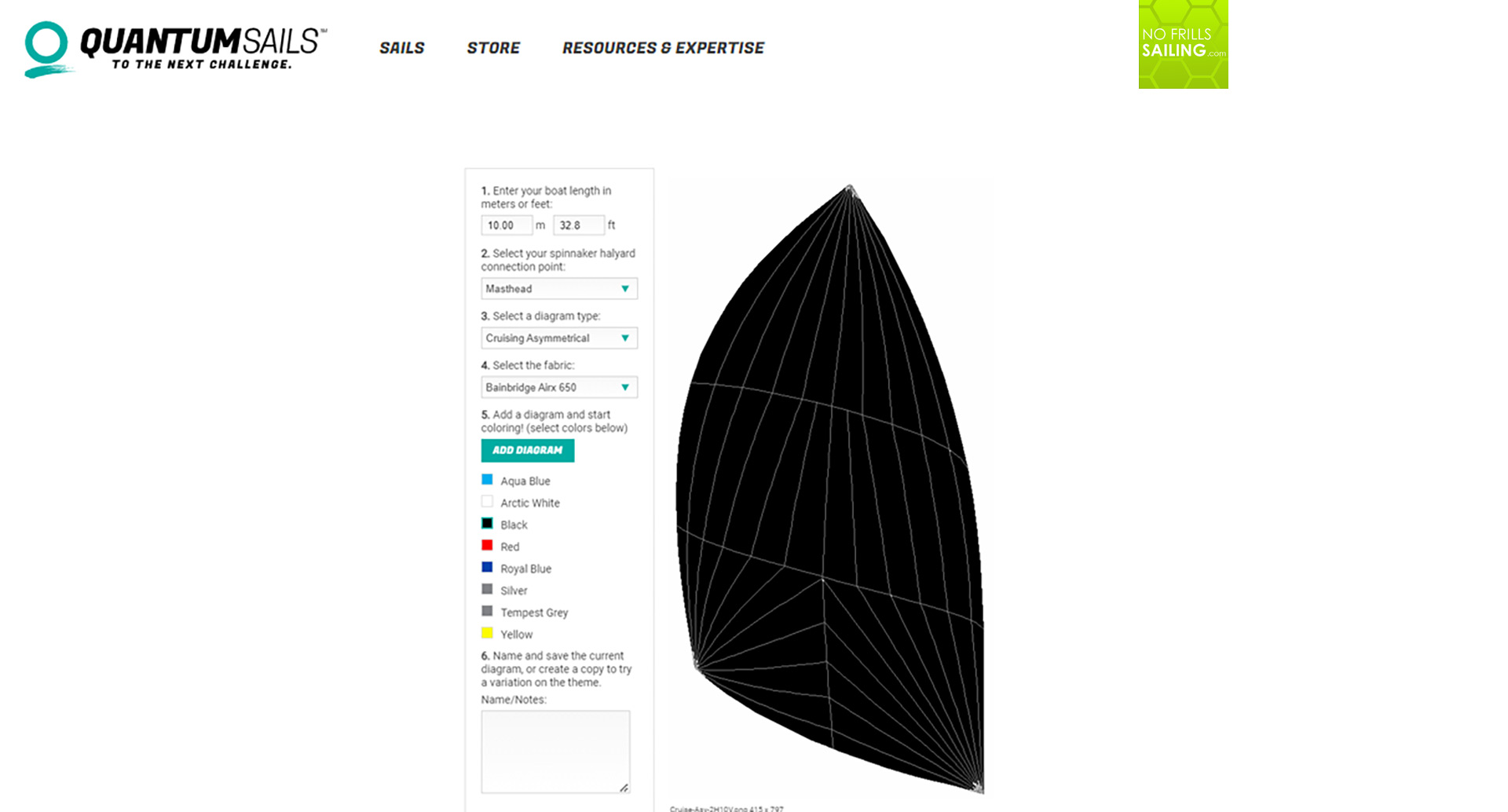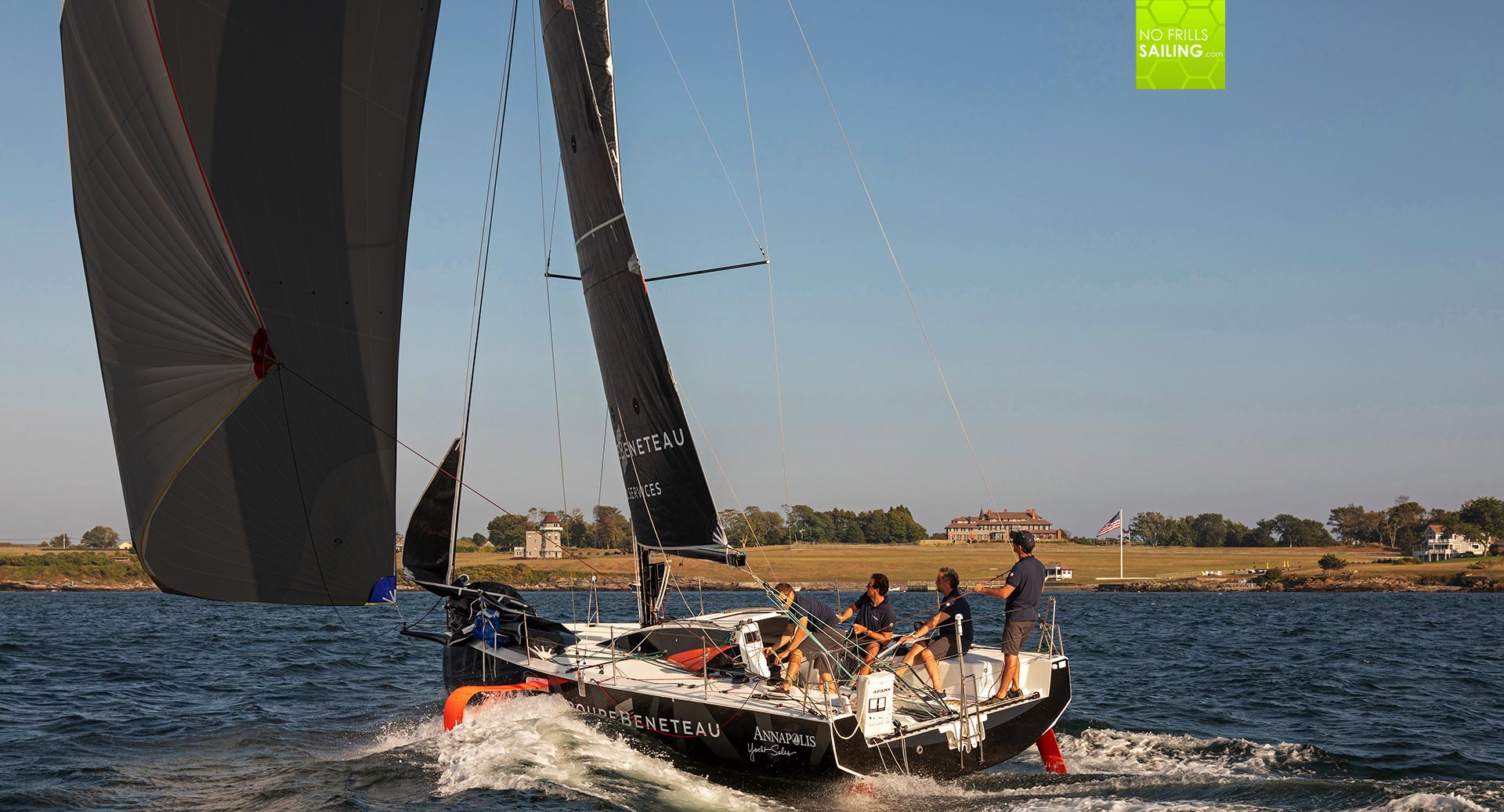I´ve noticed for quite some time now that many sailors and skippers I dearly respect, although very different in their style of sailing, seem to have one thing in common: They all seem to have a preference of black Gennakers or light wind sails in general. I never really attached too much of attention to it but lately – during another long conversation with a friend who also works in the boating industry – it kind of opened my eyes. Why would a pro-skipper or boat owner choose the relatively boring color “black” for his Gennaker? Now, look at this awesome picture of the great COMANCHE super maxi racing yacht … all black sails. Okay. Let´s dive into it.

I contacted the crew of many more prominent boats of which I had the definite information confirmed that a black Gennaker was used aboard, sadly, none of these “high class” captains or crew members and none of the owners would answer directly, let alone explain why this odd fact was apparent throughout the scene. So I checked my telephone list and called the one professional I know must have intimate knowledge of the scene: Although I cannot disclose the name, this guy is a good chunk up in the product developing department for Beneteau sailboats and used to start his career deep inside a big brand sailmaker. To my surprise, he finally agreed to explain things to me.
Insider´s tip among pro-sailors
Using a black colored Gennaker is an insider´s tip for a long time, he openly discloses. “The reason is simple: Black Gennakers are faster.” I can “hear” him smile through the phone, a little pause. Then he takes a white sheet of paper and draws a quick scribble, sending it via whatsapp. Upon receiving and looking at it, he explains: “Especially in very light conditions where you have a relatively cold water surface but strong, unhindered sunshine a black, or very, very dark colored Gennaker will now receive this full amount of sunshine.” I begin to understand. The flickering arrows on the paper indicate an area of hot air in front of the sail. “This is where temperatures on the Gennaker´s surface rise and rise and rise.”

“Now, what happens with hot air?”, he asks. Well, it will … go up! – I answer. “Right so!”, he nods: “The hot air in front of the Gennaker is heated up extremely if conditions are right. And this will create a flow up all along the sail. To keep it short, this effect increases the pressure gradient between foreside and backside, adding up to the lift created by the wind flowing around the wing-shaped sail. That is the much desired extra of speed for the boat.” He laughs – now this is the secret?! He tells me that during Figaro 3-development they also trained with black Gennakers. Before his time with the yard, when attending big races in Maxi class, they always had an all-black Gennaker ready to go up at all times: “We used to call it the Black Turbo”, he recalls: “And it was forbidden to talk about it.”
A secret, now becoming common knowledge
This is something big, I think by myself. Flying through my phone dictionary I stop at the number of Rodrigo Valverde. The Spaniard is a keen sailor and Sales Manager for Excess Catamarans, a great guy with big insight. I tell him about my findings. At first a bit reluctant – which only bolsters my efforts – but “now that you know, I tell you”, he agrees: The story of Marco and Lizzy. The couple apparently bought an Excess 11 catamaran, christened her BOMBARDA and recently sailed her across the Atlantic Ocean as part of the ARC.

“Look at the pictures,” Rodrigo urges me in a separate e-mail, showing BOMBARDA sporting an all-black Gennaker. “These guys know how to sail, doing it safe and fast. I remember that during specification of their new boat they insisted not to take the light wind sails provided by the yard but, with emphasis on performance, wanted to have their own equipment, which of course is no problem.” During last year´s edition of the Atlantic Rally for cruisers, which was partially dominated by large chunks of little to no winds, BOMBARDA played off her little secret: “During the calmer periods I know that they had their black A3 up and apparently this made the difference”, Rodrigo writes: “The catamaran won the ARC 2021 in her category.” Well done! By the way, have you ever wondered why this great TV-series is called “Black Sails”? Anyway …
Talking to Quantum Sails
If this is the trick of so many professional sailing teams and crews with increasingly ordinary sailors using it, why do ordinary skippers like myself don´t know about it? Why does the industry, especially sailmakers, not make a fortune out of marketing this? One day later I grab my phone and call Sven Krause, CEO of Quantum Sails Germany. He used to make a career at Dimension Polyant, one of the big names of sailcloth makers, before he joined the customer´s end. Sven takes a deep breath (which also could have been a sigh) and said: “Please do not disclose this until April the first!”, he said in a somber tone and I – of course – promise not to do so. “Quantum is going to launch, on a global scale, a new range of products at this date which will do exactly this.” Now, there you have it!

“We call it the “Black Matrix Sails” and are going to massively market this new set of products”, Sven discloses. Apparently, these light wind sails will cover Gennakers and Code-0 sails for heavy duty use on racing boats as well as for cruising yachts and private customers. “In this, we have developed a new sailcloth to fully utilize the thermal lift effect. Our garments aren´t just black colored standard canvases, which wouldn´t do the trick right. You need to have absolutely opaque quality – which is of course complicated to achieve in thin materials. Our Black Matrix sailcloth is therefore immersed in a special solution of a compound of carbon-dioxide nano particles which are treated in a special way. The outcome is the blackest black you can imagine.” Sven tells me that according to Quantum´s equation a Black Matrix A3 Gennaker in full sunshine can make the difference of “up to 2.3 knots” in boat speed. That would indeed be awesome! And, of course, the black nano-particles are re-processed from atmospheric CO2, which is a “green” nice little side-effect too.
Everybody´s going thermal now?
Making some more calls to my friends and acquaintances at other sailmakers, I got some confirmation that these brands will launch a “Black Matrix”-like sails collection soon exploiting the thermal lift effects and making it available to everyone. “One thing a skipper must know”, Sven tells me: “The thermal lift effect only works when the heated area of the sail is the leeward side, meaning the sun must be in front of the sail.” It shall only be this setup when the foreside of the sail is heated up thoroughly that the additional flow of air is created. This will restrict the use-case of a Black Matrix-sail, but Sven knows that people will buy it anyway: “The prospect of being quickest out on the water is all-too tempting”, he says, I can´t agree more.

So what am I going to do now? Back in the day I chose the color of my Gennaker just for having a nice color that fits my taste and the style of my boat. But now, apparently, I shall make my decision based on a possible boat speed gain by utilizing the thermal lift effect? Checking in with Seasape in Slovenia, I strike a deal to receive an all black Gennaker for GEKKO too. I want to see it for myself on my very own boat how much faster I can be utilizing hot hair going up on the front of my sail: “Production of black Gennakers is sold out for quite some time”, they tell me upon my order, promising to be able to deliver within a twelve month time so that I will be able to do a thorough test article, proving that the thermal lift effect indeed makes a boat fast. This, I hope, will then be possible approximately around April, the first, next year.
You may also like to read:
Beware of feet: Better look for meters
Calculated sails area according to CE-parameters
Testing the Oxley sail
